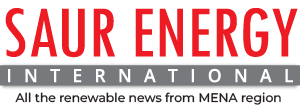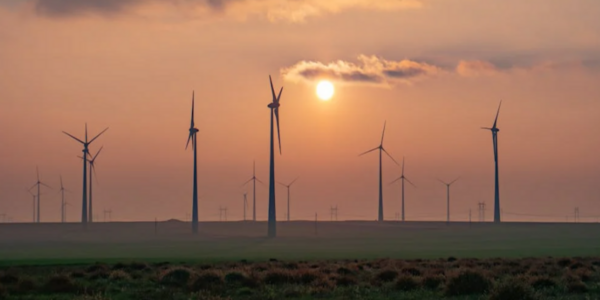The year 2025 is expected to witness the record growth of renewable energy following the uptick in wind power market from the preceding year. Going by the trends in motion, the global wind energy capacity addition is set to double and reach over 700 GW by as early as 2028, compared to 2022 levels.
New wind power installations surpassed the 100 GW milestone for the first time in 2023, while the cumulative wind power capacity also crossed the 1 TW mark in the same year. Building on this growth trend, the Global Wind Energy Council (GWEC) expects 2024 to close with over 130 GW of new wind power additions.
As per International Energy Agency, the wind power will surpass Nuclear electricity generation in 2025. We look at the top 5 trends that will shape the global wind power industry in 2025.
#1 South America: The Next Offshore Wind Frontier
South America is emerging as a key player in offshore wind energy, with Brazil, Colombia, and Uruguay making notable progress. Brazil leads with a technical offshore wind potential of over 1,200 GW. According to the World Bank, the country could install 96 GW of offshore wind capacity by 2050 with a strategic approach. In October 2024, Eletrobras signed an agreement with Ocean Winds to develop offshore wind farms, highlighting Brazil’s commitment to renewable energy. In December 2024, Brazil’s Senate approved an energy bill establishing an offshore wind regulatory framework, though its inclusion of fossil fuel incentives has sparked debate.
Colombia launched Latin America’s first offshore wind auction in October 2023, aiming to allocate maritime areas for 1,000–3,000 MW capacity. By October 2024, nine companies, including BlueFloat Energy and Ecopetrol, expressed interest. Formal bids are expected by mid-2025, marking significant progress in Colombia’s energy transition.
Uruguay, with an offshore wind potential of 250 GW, is exploring projects to support its green hydrogen initiatives. Government statements indicate growing interest in leveraging this capacity for sustainable development.
While the region shows promise, challenges remain, particularly in regulatory frameworks and infrastructure. Advancements like Brazil’s regulatory framework and Colombia’s auction are steps forward. These developments position South America as a rising frontier in global offshore wind, with immense potential to meet its renewable energy goals and support sustainable industrial growth.
#2 National Policies to Accelerate Offshore Wind Through 2025
National industrial policies are playing a pivotal role in accelerating offshore wind development globally. In 2024, several countries implemented significant measures to advance this sector. Thus, 2025 is set to trend increased offshore activity.
The REPowerEU programme aims to transition Europe from fossil fuels, streamlining offshore wind permitting. The UK plans to quadruple offshore wind capacity by 2030, investing £1.1 billion and lifting England’s onshore wind ban. It also advances seabed leases via GB Energy and The Crown Estate. Germany’s 2023 development plan outlines potential offshore wind sites in the North and Baltic Seas, alongside tender schedules and commissioning procedures. Norway allocated €3 billion for its ‘Utsira Nord’ floating offshore wind auction, boosting renewable energy initiatives across the region.
The US offshore wind energy market continues to be driven by an increasing amount of state level offshore wind procurement activities and policies. The North American nation brought the Bipartisan Infrastructure Law and the Inflation Reduction Act to support the advancement of offshore wind by providing significant incentives to increase the economic attractiveness of offshore wind energy projects in the country. Procurement mandates are statutory requirements for the state to achieve a predetermined quantity of offshore wind generation on a scheduled timeline.
Brazil’s Federal Senate has also passed the country’s offshore wind bill. In March 2024, the Chilean government announced the development of its action plan, and in August, a British-Chilean consortium expressed interest in building an offshore wind farm in the country.
India’s Viability Gap Funding scheme to support initial developments in offshore wind marks the countries beginning in the offshore wind sector.
#3 Floating Wind Take the Reins
The 13 TW-potential global floating wind industry is still in its nascent stage, with around 270 megawatts of operational capacity as of 2023. However, the global pipeline for new floating projects is 244 GW, a testament to the great interest in this technology. As a result the sector is expected to flourish in 2025.
The floating offshore wind is projected to account for 15 percent of total offshore wind energy, contributing 264 GW by 2050. Thus, the push in the sector is bound to accelerate the technological advancements in an effort to bring down costs in 2025, with LCOE of floating wind farms expected to drop to USD 100 per MWh by the middle of this decade, and to USD 67 per MWh by 2050.
Many industry stakeholders have expressed confidence that the floating offshore wind industry will reach full commercialisation without any subsidies by 2035. Thus, it is imperative that as many floating wind farms as possible are deployed by 2030.
Europe is leading the floating offshore sector, where Norway and the UK lead the way. France, Spain, Italy, and Portugal are also intensifying efforts to develop new projects. In Asia, Japan, China, and South Korea are at the forefront. Similarly, the United States, with two-thirds of its offshore wind potential suitable for floating projects, is heavily investing in advancing this technology. In 2022, the Biden-Harris administration introduced the Floating Offshore Wind Energy Shot, aiming to cut floating offshore wind energy costs by over 70 percent, targeting USD 45/MWh by 2035.
Leading companies with regard to floating technologies are Mitsubishi Heavy Industries (Japan), Vestas (Denmark), Siemens Gamesa Renewable Energy A/S (Denmark) and Hitachi (Japan).
Furthermore, while the coupling of floating offshore wind and hydrogen is not a priority for the industry at this moment in time, pilot initiatives are demonstrating the potential coupling opportunities.
#4 India Accelerates Offshore Wind Ambitions
India ranks fourth globally in wind energy, with over 45 GW of installed capacity. The country aims to achieve 140 GW of wind capacity by 2030, including a major push in offshore wind. The Global Offshore Wind Report 2024 by GWEC identifies India as one of ten nations with significant offshore wind potential, with a focus on Gujarat and Tamil Nadu’s coasts, estimated to hold 70 GW of capacity. By 2030, India targets 30 GW of offshore wind, up from an earlier goal of 5 GW by 2025.
Offshore wind development accelerated in 2024. India approved its first 1 GW offshore projects in Tamil Nadu and Gujarat. To support this, the Indian President approved a Viability Gap Funding scheme, and the MNRE amended the Offshore Wind Lease Rules to streamline the process. In November, ONGC and NTPC formed a green joint venture to advance offshore wind projects.
Key tenders marked 2024’s progress in wind energy. NHPC issued the largest wind tender for 1.2 GW of ISTS-connected projects (Tranche II). SJVN invited bids for 600 MW of wind power, while Adani Electricity Mumbai floated a tender for another 600 MW. SECI launched tenders for 500 MW of ISTS-connected onshore wind projects (Tranche XVII) and 500 MW of offshore wind projects (Tranche I). These efforts reflect India’s commitment to becoming a global wind energy leader.
The primary challenge lies in the significant initial investments and the complexity of project activities, which span 7–10 years across post-tender stages, including surveys, construction, and commissioning.
#5 Grid Integration to Boost Wind Power
Wind energy projects in Europe face significant delays, with over 500 GW of capacity awaiting grid connection in countries like France, Germany, and the UK. Grid access remains the primary bottleneck for scaling renewable energy. Proactive planning of transmission and distribution grids, along with dynamic queue management, can prioritise mature projects and accelerate integration.
Grid expansion and reinforcement costs heavily impact developers, necessitating fair cost-sharing with System Operators. Hybridisation, combining wind and solar, optimises grid usage and reduces curtailment risks. However, inadequate regulatory frameworks hinder hybrid systems, requiring tailored guidelines and revenue stabilisation schemes to boost investment.
Curtailment due to grid congestion further complicates renewable energy deployment. Harmonised compensation mechanisms and flexible grid connection agreements can alleviate financial uncertainties for developers. Digital innovations, such as advanced metering infrastructure and AI, promise better grid management and predictive maintenance.
Targeted actions in 2025, including improved regulations and coordinated efforts among governments, developers, and System Operators, are essential to enhancing Europe’s wind power capacity. These measures, coupled with efficient integration and storage systems, are key to maximising offshore wind benefits and achieving renewable energy goals.


